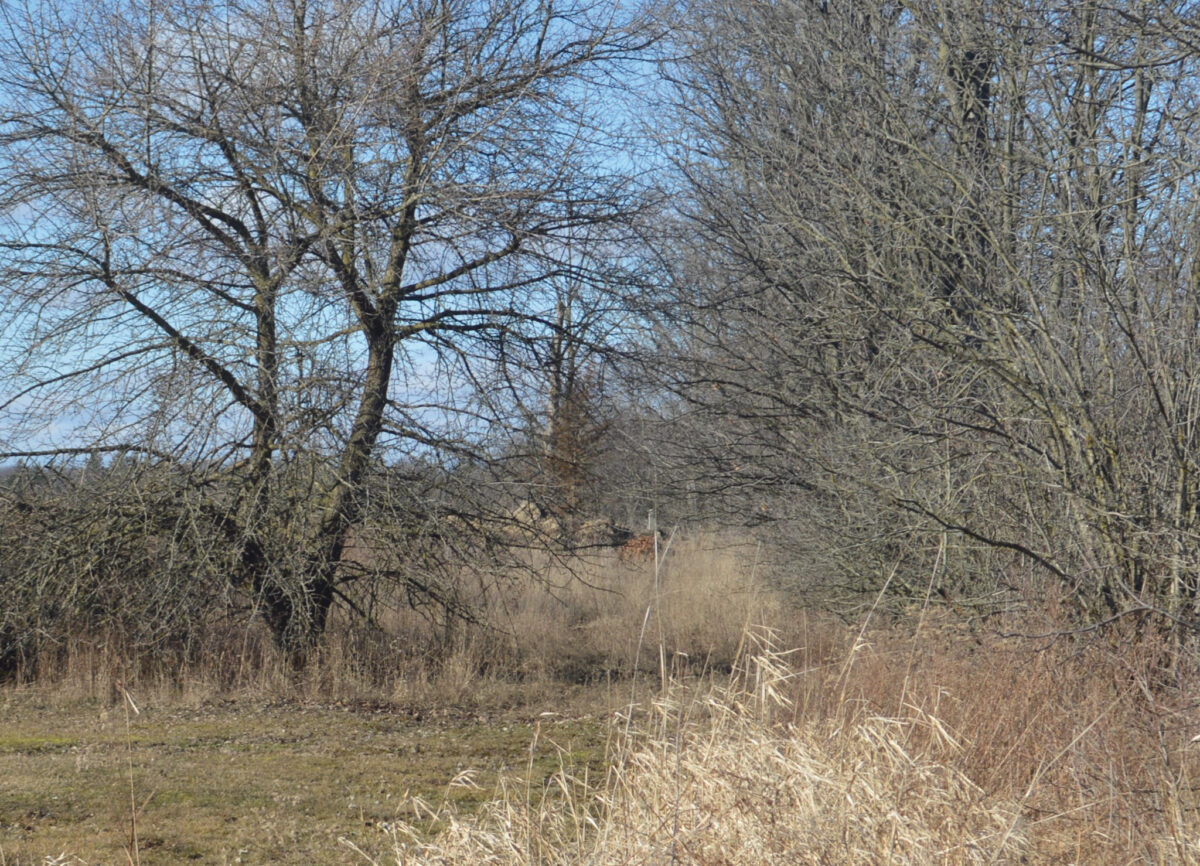HALDIMAND—There is more than one cemetery in Haldimand with the remains of early Black settlers, and two years after the Bereavement Authority of Ontario (BAO) learned about Morris-Williams-Burke Cemetery, it remains legally only an unlicensed burial ground. This means it is unprotected and inaccessible to descendants who, much as with Street Cemetery, are in earnest to connect with their history.

The dilapidated burial ground is located on private property on Concession 2 South, partially hidden by old shelter belts and mounds of dirt after the landowner, on previous advice from the BAO, had an archaeological assessment done in June 2023.
The BAO revealed the cemetery in its June issue of “Beyond” magazine, while announcing Haldimand County was taking ownership of Street Cemetery, a similar burial site for Black settlers.
“The BAO is also actively working to license another cemetery, which may also be connected to Underground Railroad freedom seekers,” it stated. “An archaeological investigation has been completed confirming burials on Morris-Williams-Burke Cemetery, located in Haldimand County.”
According to the Funeral, Burial and Cremation Services Act, 2002 (FBCSA), no one is allowed to disturb or order the disturbance of a burial site except on instruction by the coroner, if it’s carried out under specific regulations in the Act, or pursuant to a site disposition agreement. Only then may the registrar order the landowner to start an archaeological investigation.
BAO Communications Manager, David Brazeau, said that the process of licensing can take about two years, and that “the first step to address the preservation and protection of burial sites and unlicensed cemeteries is to ensure they are appropriately licensed.”
But only after media requests did the BAO arrive to the site a few days later in an attempt to have the landowner sign application documents to become the licensed owner.
The BAO formed in 2016 and came under fire in the Ontario Auditor-General 2020 annual report, with 20 recommendations to ensure it protects and educates consumers appropriately. The BAO has spent the last three years addressing issues unrelated to the process for licensing and registering a cemetery, and has been criticized for not following up on mandatory license renewals.
Where there is a confirmed burial ground, and once a landowner signs the required paperwork, it takes up to 45 days for the site to become a registered cemetery to begin assessments.
The landowner of Morris-Williams-Burke Cemetery, who will not be named and did not respond to multiple requests for comment, cannot stop the site from being licensed, and could be ordered through the courts to do so.
Once licensed, however, the landowner can then apply to the courts to have it declared abandoned, where responsibility for the cemetery will fall to Haldimand County.
The County has, after significant delays, taken ownership of Street Cemetery and is currently working to have it ready for public visitation this summer. Council is also currently waiting on a report to address a rise in abandoned cemeteries to look at the possibility of offloading associated costs back to the province.
“The licensing process provides the identification of the landowner or the operator (as consented to by the landowner) so that they may be notified or reminded of the requirements to comply with the FBCSA,” said Brazeau. “The FBCSA requires safe and reasonable public access and maintenance of the cemetery, which is another reason why licensing is so important.”
With the process to allow public visitors to these cemeteries taking up to two years, on top of the years cemeteries remain unlicensed, the process wears thin on descendants – including Toronto resident Spencer Martin, who has ancestors in both the Morris-Williams-Burke site and Street Cemetery.
“We have had this unregistered cemetery with some of my predecessors there, and it’s on private property,” he said. “I wanted to have this available for all people to come and visit.”
“I understand that government moves slowly, and I can appreciate that to an extent but not too far in extent,” he added, noting that he is glad to see more timely responses to BAO check-ins of late.
And with evidence of his family having lived and died throughout the Canfield area, accessing that family past has deep meaning for Martin.
“When I first visited Street, I was totally overcome,” he said. “I couldn’t speak, because this had been off limits for all my life.
“We knew that back in that stand of trees there’s a cemetery and there are a lot of our family buried back there, and that’s all I knew growing up. To actually go see it and read the stones was moving beyond belief.”
Martin paused.
“It was these people that had gone through adversity, and escaped slavery and/or travelled here, and laid down roots and they were second class citizens that passed,” he said. “And they were living on the Darkie side road and here are their remains turning into dust.
“To have that brought back from the edge was really moving, and I feel that the same is true for all of these little cemeteries. These are people to be celebrated, whether they’re Black, brown, Chinese, it doesn’t matter. They made up who we are today, and we should all celebrate them.”
Recent Posts

Caledonia resident launches AID for St. Elizabeth fundraiser, sending help to Jamaica in wake of hurricane

Expert urges Ontario to adopt tougher lead limit in water

Haldimand Press welcomes student for Take Our Kids to Work Day


